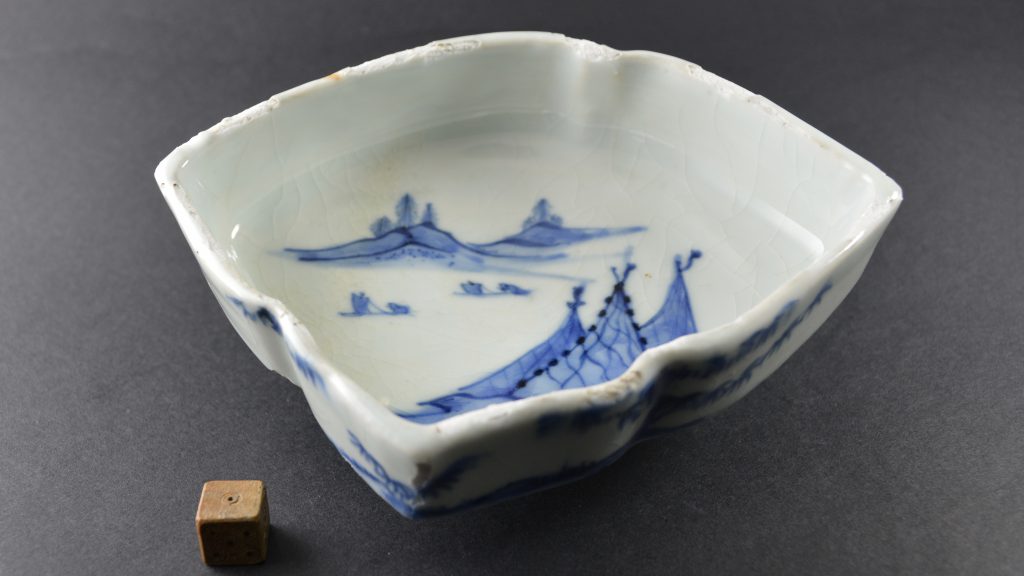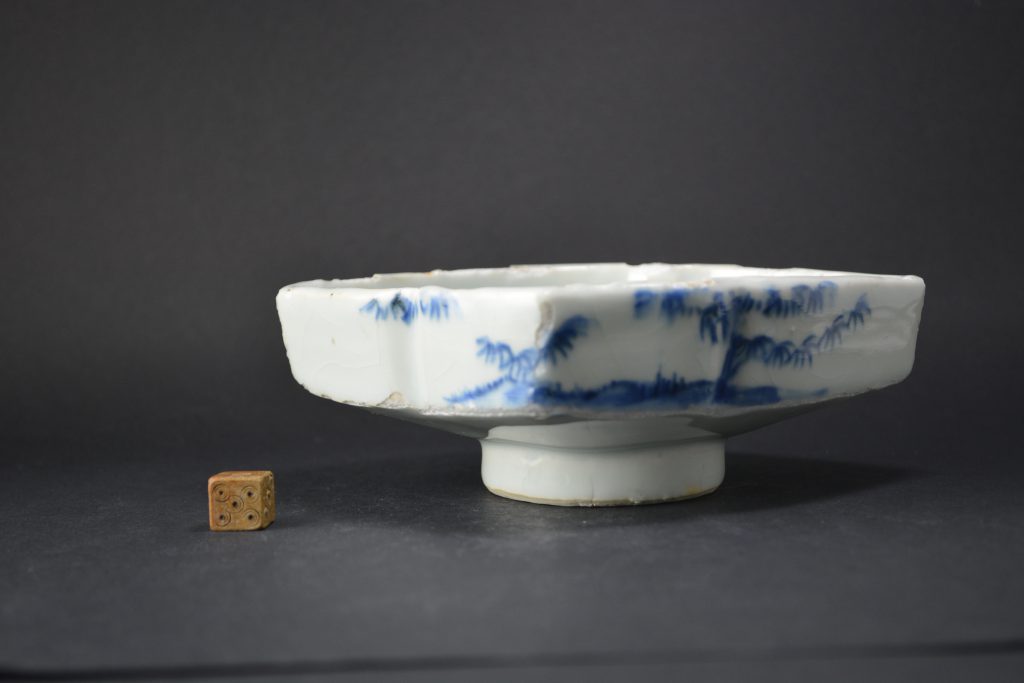
A Transitional Porcelain ‘Ko-Sometsuke’ Dish, Chongzhen Period c.1640
A Transitional Blue and White Porcelain Dish, Chongzhen Period c.1640. This asymmetrically shaped ‘Kaiseki’ porcelain dish was made at the end of the Ming dynasty in China for the Japanese market. It is very heavily potted of rather evenly thick clay and sits on an even thicker high circular base. The design consists of three large fishing nets drying while they are supported on poles, there are two diminutive boats in the mid-ground with rocky outcrops with pine trees in the distance.
SALE PENDING
- Condition
- Good, extensive 'Mushikui' (insect-nibbled) fritting.
- Size
- Width : 15.9 cm (6 inches)
- Provenance
- N/A
- Stock number
- 24524
Information
Ko-Sometsuke :
Ko-Sometsuke, meaning `Old Blue and White` is a term used to describe Chinese blue and white porcelain made for Japan. This late Ming porcelain was made from the Wanli period (1573-1620) and ended in the Chongzhen period (1628-1644), the main period of production being the 1620`2 and 1630`s. The porcelain objects produced were made especially for the Japanese market, both the shapes and the designs were tailored to Japanese taste, the production process too allowed for Japanese aesthetics to be included in the finished object. Its seams firing faults were added, repaired tears in the leather-hard body were too frequent to not, in some cases, be deliberate. These imperfections as well as the fritting Mushikui (insect-nibbled) rims and kiln grit on the footrims all added to the Japanese aesthetic. The shapes created were often expressly made for the Japanese tea ceremony meal, the Kaiseki, small dishes for serving food at the tea ceremony are the most commonly encountered form. Designs, presumably taken from Japanese drawings sent to China, are very varied, often using large amount of the white porcelain contrasting well with the asymmetry of the design.















